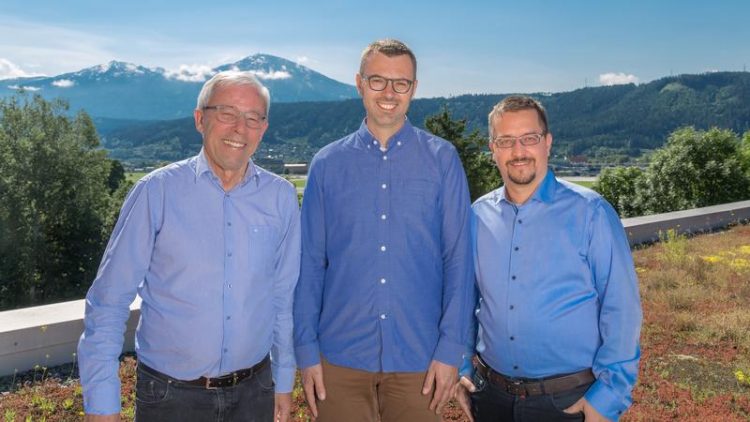Quantum computers by AQT and University of Innsbruck leverage Cirq for quantum algorithm development

Picture showing Prof. Peter Zoller (left, Univ. of Innsbruck), Dr. Markus Hoffmann (Google), and Dr. Thomas Monz (AQT) upon completing the projects M. R. Knabl
Quantum computers and software
Several research facilities and companies are working on the realisation of quantum computers. There are multiple physical platforms that might host a future quantum computer, where AQT pursues trapped ions and Google is following an approach based on superconducting electronics.
Each approach has different capabilities and limitations, generally reflected in different programming languages dependent on the device. This mix of program languages makes it hard for software engineers and programmers to use these quantum computer prototypes as well as to explore the capabilities of different architectures.
Quantum Innsbruck and Quantum Munich
Google developed a Python framework. called Cirq for creating, editing, and invoking Noisy Intermediate Scale Quantum (NISQ) circuits Dr. Markus Hoffmann from Google Munich explains “It's great to see the adoption of Cirq following the spirit of the Apache 2.0 open source license and making further hardware platforms accessible to the Cirq developer community.”
The library supports multiple hardware architectures, based on superconducting electronics and atomic systems. Now, researchers and industry partners can readily run their quantum software on the Innsbruck quantum computers and also enable students to build out expertise on running quantum algorithms on actual hardware. Besides research, these efforts also benefit the quantum computer startup AQT in Austria.
CEO Dr. Thomas Monz “is delighted to provide such a simple and effective interface between international quantum software developers and our Innsbruck-based quantum computer infrastructure to facilitate the realization of an entire suite of quantum apps for research and industry partners.” Dr. Philipp Schindler at the University of Innsbruck is convinced that the interface will enable new collaborations with research partners around the world.
About AQT:
AQT is a quantum computer startup located in Innsbruck, building on decades of experimental and theoretical expertise in the field of quantum information processing. The goal of AQT is to get quantum technologies out of a laboratory environment and turn these technologies into everyday-products. The long-term goal is a quantum computer based on trapped ions that can be readily operated from any PC or laptop.
About University of Innsbruck:
The work groups at the University of Innsbruck are, amongst other efforts, performing research on clocks, sensors, simulators and quantum computers with ion traps. Together with the Austrian Academy of Sciences, the University of Innsbruck is an internationally recognized center for quantum research.
Dr Thomas Monz
Alpine Quantum Technologies (AQT)
phone: +43 512 507 52452
email: thomas.monz@aqt.eu
web: https://www.aqt.eu/
Dr Philipp Schindler
Department of Experimental Physics
University of Innsbruck
phone: +43 512 507-52466
email: philipp.schindler@uibk.ac.at
web: https://www.uibk.ac.at
Dr Markus Hoffmann
Google
email: markushoffmann@google.com
Media Contact
All latest news from the category: Information Technology
Here you can find a summary of innovations in the fields of information and data processing and up-to-date developments on IT equipment and hardware.
This area covers topics such as IT services, IT architectures, IT management and telecommunications.
Newest articles

Superradiant atoms could push the boundaries of how precisely time can be measured
Superradiant atoms can help us measure time more precisely than ever. In a new study, researchers from the University of Copenhagen present a new method for measuring the time interval,…

Ion thermoelectric conversion devices for near room temperature
The electrode sheet of the thermoelectric device consists of ionic hydrogel, which is sandwiched between the electrodes to form, and the Prussian blue on the electrode undergoes a redox reaction…

Zap Energy achieves 37-million-degree temperatures in a compact device
New publication reports record electron temperatures for a small-scale, sheared-flow-stabilized Z-pinch fusion device. In the nine decades since humans first produced fusion reactions, only a few fusion technologies have demonstrated…





















